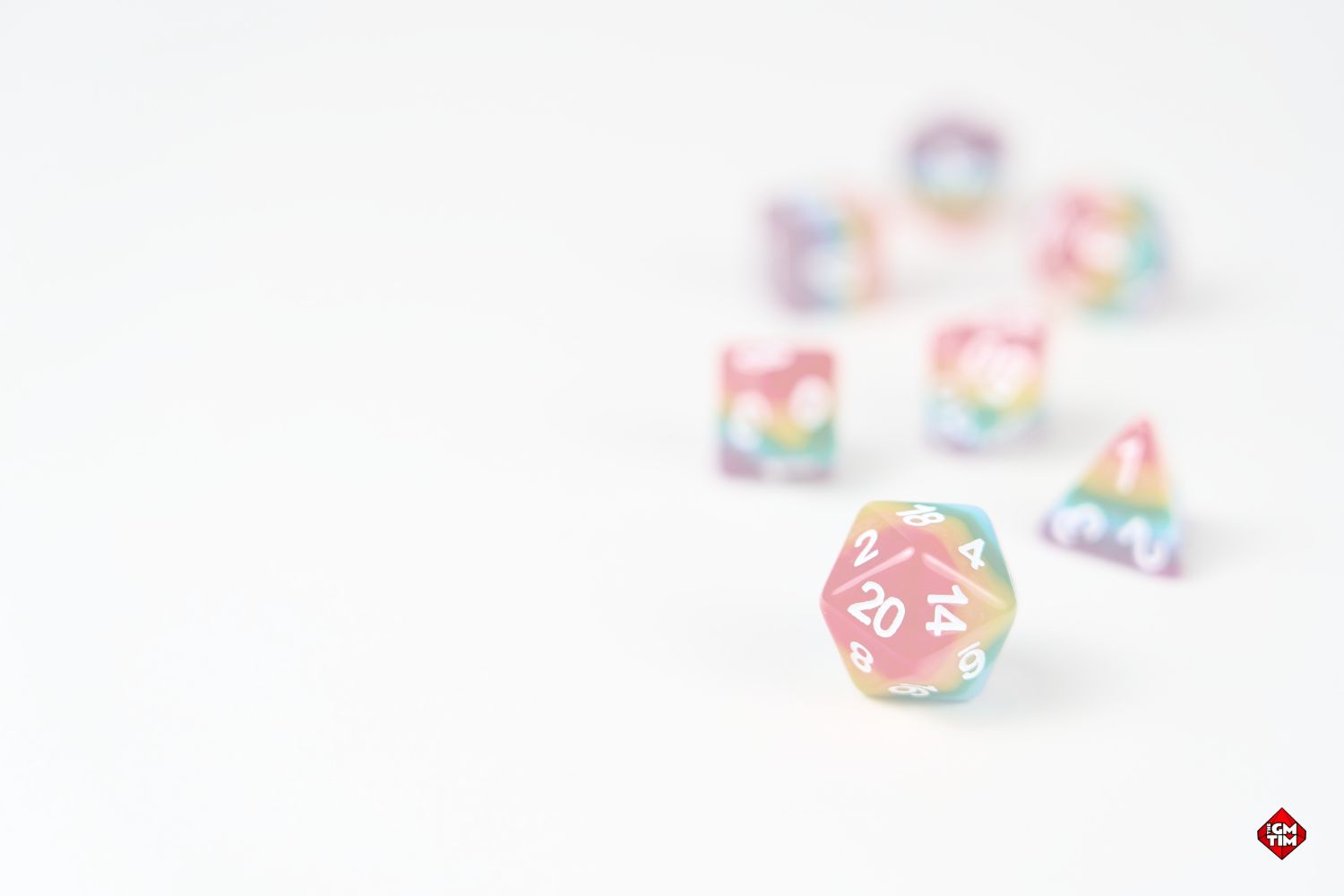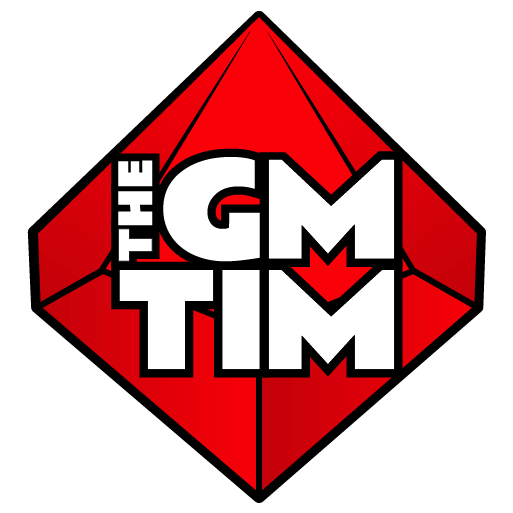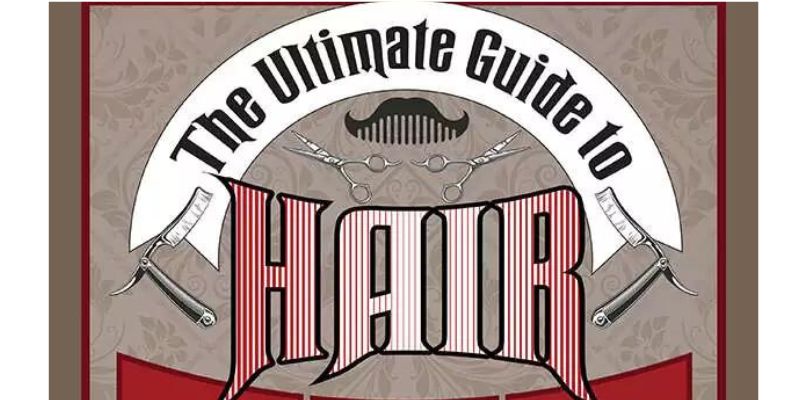This is the final part of the three-part discourse I created into Queer Joy at the gaming table. In part two I shared my backstory of my own realizations. Today’s post ends my mini series by providing you with things you can do at your table to welcome Queerness and Queer Joy to your table.
I considered writing this blog as a ‘how-to’ guide except, as I wrote, I kept getting so angry. I realized that I’m past soft coaching. I’m in more a demand-mode. Inclusivity is easy. Except that ease is not from just slapping a rainbow sticker on your laptop, or a backstory, or dropping a nonbinary NPC into a module. That’s performative allyship. This 2025 Pride season reminded us how fleeting performative allyship really is with the amount of companies who’ve rainbowed up for years, suddenly vanish because of fear.
No.
Real inclusivity and queer joy happens when the players feel safe enough to take up and share space in the real world, and the one the table is playing in.
No More Soft Coaching!
Its time gang. Those of us who survived and grew up in the decades of erasure have every right to be angry and jaded. Except, I’m tired, I’m angry, and I’m tired of being angry.
Even after decades of death, jokes, baiting, and an eye-rolling amount of “maybe later” attitudes towards people’s life—inclusion still isn’t a constant consideration. I am done asking for permission or waiting for a voice to be given to me. And I refuse to be jaded. There are more “out” middle-aged queer peoples now than at any time in history.
Because we lost so many of those who would have been our elders over the last 40 years, we are left with the responsibility and hoonour of getting to define what our later-life culture gets to be. It is challenging to find another demographic with this blessing and curse. I would rather focus and use my anger to encourage and offer solutions. As a white cis gay man, I know my experience isn’t universal. I’ve had to learn, mostly unlearn, a lot. I also have to make sure I do what I can to affect change so that those younger than me don’t have to suffer the treatment I did.
Ok, So What Can We Actually Do? 4 Ways
Believe me, if there were a magic wand that could be waved and fix this issue in gaming, it would have been waved by now. This is going to take effort from everyone, especially those not in the queer community, looking at you Allies. Like most marginalised peoples we are not causing the problem. We can’t be the only answer to the solution.
As you read through the “4 Ways” I offer you to make it better, I want you to think about your own table. Don’t just nod along—make a commitment. Write down one specific thing you’ll do at your next session to build queer joy and then follow through. If you need a hand, I gotchu. Each way has actions you can take to apply the practice.
Normalize Queerness in Worldbuilding – 3 Sentence Rule
Normalising is what good allies do in, and out, of game life. In gaming, normalising is the easiest place to start. Just let it be there. No subplots required. No coming-out arcs needed. Just let queerness live in the ordinary. Being aware of how distinct cultures in your game world behave is important. For example, not all communities assume family = blood. If you have moon-elves in D&D or Trill in Star Trek, it’s very probable a character could change pronouns throughout the campaign.

The bare minimum is a simple as a sentence, “The captain and their spouse.” I find that almost overdone. Instead, I modified of the rule of three in writing; I call it the 3-Sentence Rule. “The wizard’s husband brings lunch during the ritual prep. His husband teases him about an incantation miss-pronunciation with a wink to the PCs. The wizard rolls his eyes, corrects his pronunciation, and keeps chanting.”
The 3-Sentence Rule
The 3-Sentence Rule isn’t just about casually mentioning queer characters. It’s a way to normalise them effortlessly within your world, with less risk of resorting to tropes. In fact, this rule is useful for introducing any character, item, NPC, etc. that you want to give some literary weight to, without making a big thing about at the time. Here’s how you use it,
- How they enter the scene: Introduce the queer character by their role or relationship, casually and clearly. (The wizard’s husband brings lunch during the ritual prep.)
- Emotion-based interaction: Show them interacting briefly in a relatable, authentic way—teasing affectionately, checking in emotionally, or simply engaging in everyday dialogue. (His husband teases him about an incantation miss-pronunciation with a wink to the PCs.)
- How they exit the scene: Wrap up naturally without lingering or calling attention to their identity specifically. (The wizard rolls his eyes, corrects the pronunciation, and keeps chanting.)
Action: The next time you introduce a new NPC, casually mention, or interact with their queer partner. Even better, introduce your player’s favourite Boblin-the-Goblin NPC’s spouse. This adds personal stakes for the players. The 3-Sentence Rule gives queer characters visibility without tokenizing or overly dramatizing their presence.
Stop Pretending “Ignoring Sexuality” Helps
This comes up constantly: “My games don’t really focus on romance.” or “I just don’t think about gender or sexuality at the table.”
Unless no one in your world flirts, has a spouse, has a gendered title, or has a family backstory, what this actually means is: “I only think about cishet relationships.” This isn’t an attack. It’s the way the culture we consume has been crafted. I can prove it. Think about the movie WALL-E. What’s their gender? You probably said ‘he,’ right? Why? There’s no proof of that. Not once in the movie is there a specific gender or sexuality marker for Wall-E or EVE. There is however assumptions baked into the cartoon by cishet-coded storytelling. It happens all the time in books, tv, and movies. When you do it in your games you might not even notice it.

Queer players notice. We’ve always noticed.
Actionable Steps for Addressing Sexuality at the Table
When I say, “stop pretending sexuality doesn’t exist,” I don’t mean your table needs romance arcs every session, even a game of Blue Rose wouldn’t want that. What I do mean is paying attention to how you make space for characters’, and players’, identities as naturally as you would for anything else:
- DMs: When you write down the character’s names in your notes, or when you have them write their character names on the table card, get them to add their character pronouns. That helps you and co-players not misgender the character throughout the session.
- Players: Clearly state your character’s pronouns or even relationship status when you first introduce your character. It doesn’t have to, yet can, be blunt. “I’m Braga, she/her pronouns.” You can casually drop it in: “I’m playing a half-orc cleric named Braga, she’s tough and sentimental—her girlfriend’s charm bracelet is always on her wrist.” It’s quick, clear, and sets a welcoming standard at the table among each other, its not relying on the GM to drive the bus, and you just gave the players and GM something to connect to your character with.
Action: Before playing, when you introduce yourself to the table, add your pronouns you go by. DON’T MAKE THIS A BIG DEAL! It’s not! You are simply setting the parameters for your real life character! If Braga would be cheesed for being misgendered why wouldn’t Tim?
Safety Tools Encourage Creativity. They Don’t Censor It
Hot Take: Tools like the X-card, Lines & Veils, and Script Change aren’t there to silence content. They’re there to amplify joy by building trust. They let you take emotional risks knowing you won’t be driven over a cliff. They also help you check in with yourself.
Whenever I have pushback to these types of consent concepts, it’s always from the idea that “well, now I’m being restricted.” In a way, yes. You are. Except, why is that bad? The application of these concepts makes it clear that people at your table can feel safe and grant them permission to be vulnerable and explore joy without being threatened or punished. Also, you don’t know what has happened in someone’s life and there is little reason how reskinning spiders into goblins in a pinch would be an impasse to the game.
Queer Joy is loud, it’s soft, it’s dramatic, it’s flirty, it’s chaotic, it’s camp, and it deserves a space that protects that expression, not flinches at it. When a table has guardrails in place, queer players can go big. We can stop holding back or masking, like we often do in real life. We can be messy. We can sparkle.
Implementing Safety Tools
You don’t need a perfect moment. Just introduce the tool(s) you plan to use clearly, explain briefly, and then use them consistently.
- DMs: If you are in a home-game you can introduce whichever of these tools work best for you. Granted, the best time for this is at the start of a campaign. Keep in mind, there is no rule that states a session 0 must be at the start of a campaign. Doing a check-in mid campaign is super helpful too.
- Players: If your DM hasn’t introduced safety tools, take ownership and bring it up gently: “Hey, can we quickly talk about using Lines & Veils or the X-card? It’d help me feel safer exploring the story.” This keeps it non-confrontational and owns that the game would be better for you.
If you are at a Convention, running a one-shot, or want to try something now, today, here’s my Cine-limits safety tool. You have to know the adventure you’re about to run—that’s important.
Action: As the table gets settled present some of the possible triggers the adventure may have. “Hey, here are some of the things in this game that some might find a bit intense or concerning: x, y, z. What movie style do we want to play this in? Deadpool, Indiana Jones, Star Wars, or Lion King.” You can do this publicly, though I recommend everyone write their choice on a piece of paper. The lowest one written down is the style you’ll run the game. Never share who wrote what, or what you might have modified in the adventure. It. Doesn’t. Matter. The players will have an exciting time, like they did watching those movies.
The styles are (in order): Deadpool, Indiana Jones, Star Wars, Lion King. These movies are all popular enough that most at your table will know them. They all deal with big themes and intense moments in a range of styles. Deadpool has intensity, no holding back, blood, gore, and crass jokes. Indiana Jones has deadly traps, critters that frighten people, some nasty scenes. Star Wars has explosion, sword fights, and limb amputations without gore. Lion King has intense fights, high stakes, yet pans away from any harsh brutality or love scenes.
WARNING: I do not offer this as a complete replacement to a safety tool. Only as a fast and loose way to introduce and understand them.
Don’t Treat Representation Like a Checklist
You’re not meeting a quota. You’ll only build a world where queerness feels like an afterthought.
Let us be:
- Heroes and villains
- Sidekicks, parents, rivals, idiots, and legends
- Joyfully in love. Openly complicated.
- Alive at the end.
PS: queer-coded villains are not representation. They’re tropes, often written by people uncomfortable with queerness. If you want to include queer villains, great! They absolutely exist. Just make sure they are not pure stereotype or coded gay because evil, also there ought be queer heroes who get to be joyful, powerful, and safe. Otherwise, all you’ve done is reinforce old ideas that still hurt people now.
How to Actually Avoid Checklist Representation
Yes. I am aware of the irony that I am giving you a list after telling you to not make a list. The point is: this is not finite, nor a thing to check-off-so-the-queer-community-doesn’t-come-at-you.
Action: When creating ANY characters or NPCs, pause and ask yourself:
- “Am I falling into any marginalised people stereotypes or tropes here?”
- “Have I given this character meaningful motivations, relationships, and agency beyond their identity?”
- “Would changing this character’s identity remove depth from the story? If yes, I’m on the right track.”
Making this a regular practice for your gaming is one of the differences between a great DM and a good DM. Don’t limit this to only including queer characters. Being mindful means intentionally weaving authentic characters into your narratives. It ensures their lives enrich the stories rather than simply ticking off a diversity quota.
Design Worlds Where Queerness Thrives, Not Just Survives
Ask anyone who plays TTRPGs regularly, it’s not just a game, its evolved so much more beyond that in its last 50 years. I knew that was true, yet until I wrote this, I didn’t realise how true for me it was. It, and that group I mention from way back, probably saved my life. Being in that group is a canon event for me. It’s the place where I got to have an adolescence I saw in the movies and where I got kissed without shame. In the game I wasn’t just someone’s best friend, going to die from disease, be a cautionary tale, a secret, or a punchline. I was a HERO. I was whole. No one could take that away from me because I rolled the dice, I shared the story, and I survived.
This is a core part of why I love the game so much. It’s why, when I run games at home or even at big events like my upcoming queer-centric game at D&D in a Castle, I always strive to create a space where queer joy thrives. I’ve felt what it’s like to be that person after years of being ignored or handwaved. I never want another player to wait as long as I did to feel that kind of joy. Because I know what it’s like to be that player who’s finally being seen and encouraged.
I don’t need or expect everyone, especially cishet men, to write a queer masterpiece. I don’t even want you to center every session around identity. I want to help others have their canon events in games. All you need to do is be aware, and part, of building gaming spaces where queer players are safe enough to take risks, be messy, be loved, be loud—and win. Not just survive. Win.
So ask yourself: when people leave your table, what world have you rehearsed with them?
And was joy part of it?
Let me know how your one thing you committed to turned out. Also, I would love to hear if there are more topics like this that you want me to write about. Thanks for reading this series. You can also read the complete essay in a single post here.





0 Comments